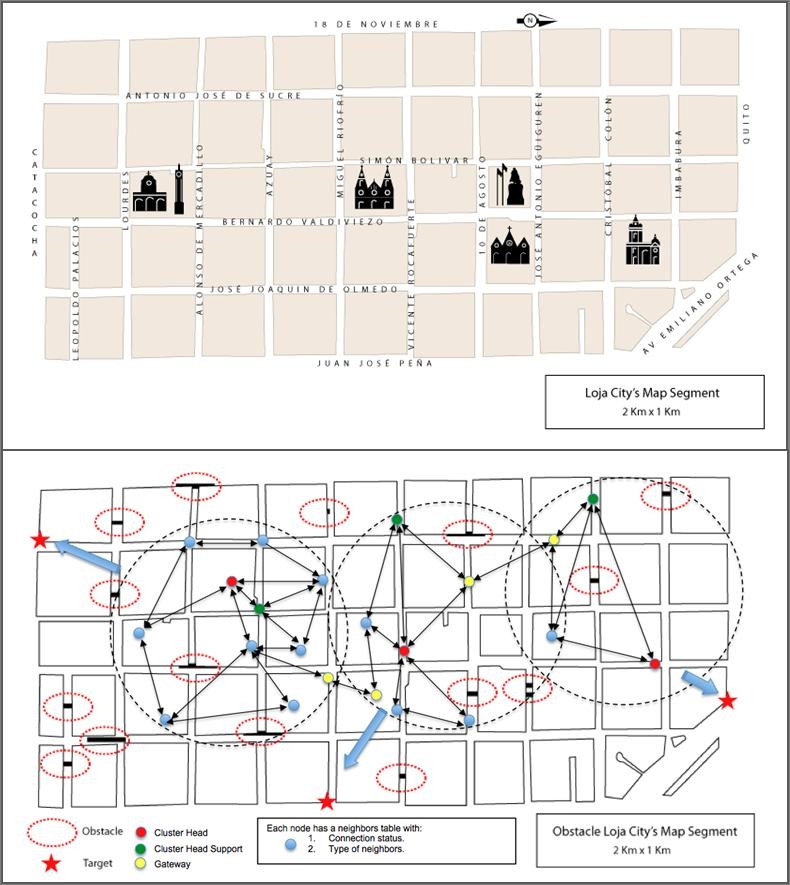
Researchers at the UPM and the Universidad de Loja from Ecuador have developed an optimizing model of routing protocol of mobile ad hoc network in emergencies and rescues.
 The proposed solution is based on the improvement of a clustering algorithm and on the creation of a new routing protocol that allows users to easily find an evacuation area in case of emergency. The model was developed by researchers of Universidad Politécnica de Madrid (UPM) and the Universidad de Loja. An emergency test simulation was done in this city from Ecuador. The evaluation of its benefits confirms the improvements of the proposed model, both mathematically and on a real basis.
The proposed solution is based on the improvement of a clustering algorithm and on the creation of a new routing protocol that allows users to easily find an evacuation area in case of emergency. The model was developed by researchers of Universidad Politécnica de Madrid (UPM) and the Universidad de Loja. An emergency test simulation was done in this city from Ecuador. The evaluation of its benefits confirms the improvements of the proposed model, both mathematically and on a real basis.
A mobile Ad Hoc Network (MANET) is a collection of mobile nodes that can dynamically create a network with no need to have a fixed infrastructure or a central administration. The MANET network technology can be integrated into smartphones providing a flexible and dynamic network that can be used in case of emergency. This network would be constituted by linkages formed by mobile terminals that are in the same area.
The dynamic nature and the no need of infrastructures of these networks demand a new set of algorithms and strategies to promote a reliable communication service. In the context of mobile Ad Hoc Network, the routing emerges as one of the most interesting areas to communicate information from a source to a destination with the end-to-end quality of service.
Due to inherent restrictions on mobile networks, the traditional routing models are not applicable to the mobile Ad Hoc Network. However, this research shows a routing solution in mobile networks. This solution is based on a model that involves an optimizing protocol of routing supported by a clustering mechanism.
The improved algorithm, called GMWCA (Group Management Weighted Clustering Algorithm) and based on WCA (Weighted Clustering Algorithm), allows the estimation of the best number and size of clustering in networks. This improvement prevents permanent regroupings and that cluster head node has longer life of intra-cluster and therefore stability in the inter-cluster communication.
The proposed Ad Hoc routing protocol, called QoS Group Cluster Based Routing Protocol (QoSG-CBRP), uses as a strategy the hierarchical clusters supported by the clustering algorithm. Each cluster has a cluster head node that manages the routing information and it is sent to its destination when there is no coverage.
In order to avoid constant clustering and algorithm clustering calls, researchers included a support cluster head node, which has the same responsibilities than a cluster head node but only when this cluster has broken the link with the other common clusters nodes for reason of distance or battery. From mathematics and algorithms, researchers confirmed the improvements of the proposed model, which consists of the improvement of the clustering algorithm and the routing protocol.
The system was simulated and assessed in the area of Loja (Ecuador).

 Previous page
Previous page Back to top
Back to top







